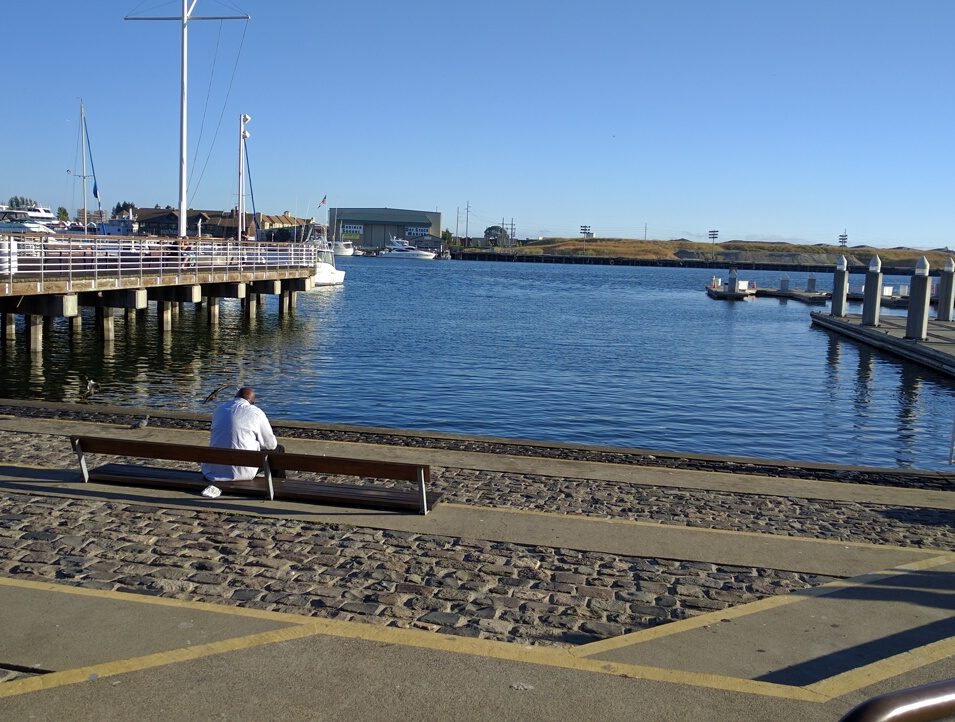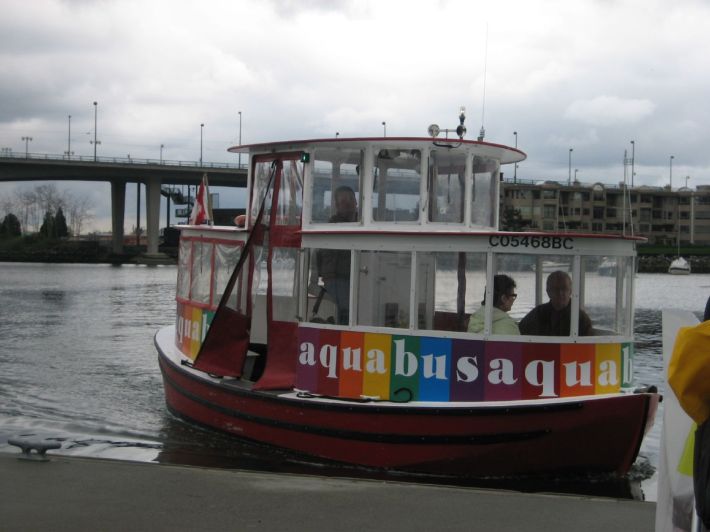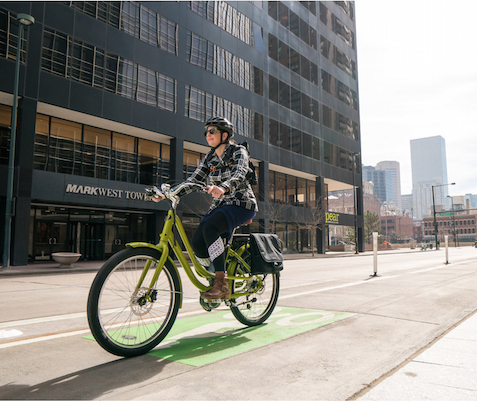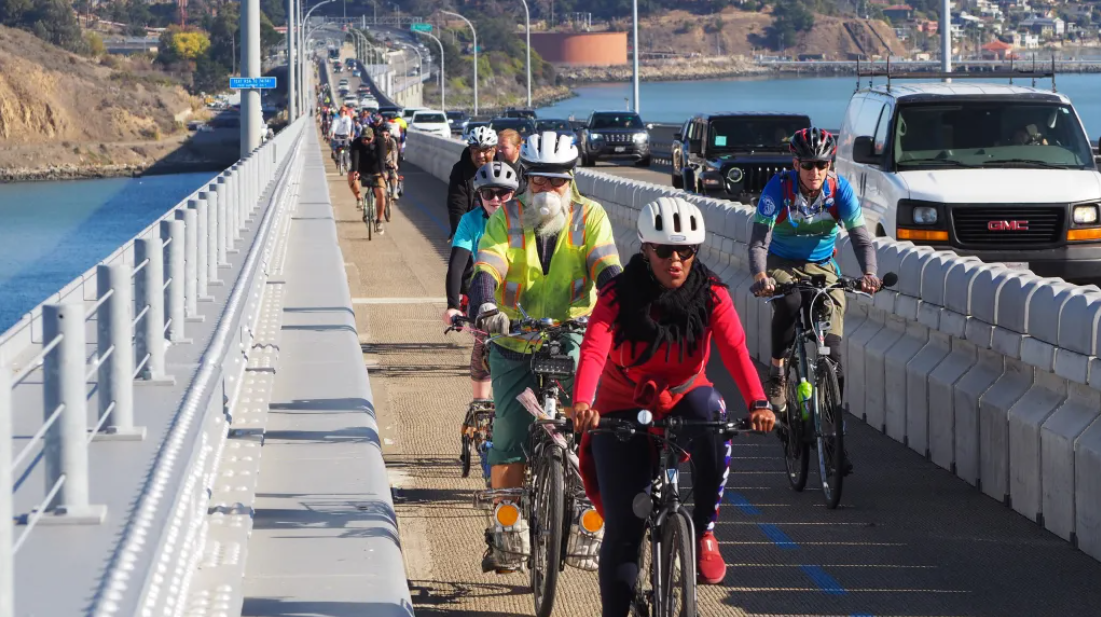Commentary: Estuary Ferry Should Run as a Horizontal Elevator, Not a Bus
4:19 PM PDT on July 6, 2022

Alameda Landing from Jack London Square, where Woodstock will alight. Photo: Streetsblog.
Note: GJEL Accident Attorneys regularly sponsors coverage on Streetsblog San Francisco and Streetsblog California. Unless noted in the story, GJEL Accident Attorneys is not consulted for the content or editorial direction of the sponsored content.
Motorists get four lanes in two underwater tubes to get between Jack London Square (JLS) and western Alameda. Cyclists and pedestrians get nothing*. Fortunately, Alameda is working to remedy that. From an approved proposal for a water ferry for bicyclists and pedestrians that, if fully funded, will start in September of 2023 and operate five days a week:
- During the eight spring, summer and fall months, the service would operate for 12-13 hours each day with approximately 44 crossings a day. During the four winter months, service would be reduced to 9 hours a day and about 29 trips, enabling the longer hours during the spring, summer and early fall months, when ridership is expected to be higher.
- Morning and evening commute services would operate between the new water shuttle dock at Alameda Landing and Jack London Square (at Broadway). Midday, lunchtime services would be provided between Jack London and Marina Village.
Alameda has committed $150,000 over two years for the pilot service, explained Rochelle Wheeler, Senior Transportation Coordinator for the city. Now her team is applying for grants from the county and others to cobble together the some $2 million it will take to get a boat running.
This is welcome news. As a resident of JLS, it's super frustrating to look across the 800-foot estuary at Target, Safeway, restaurants, and other services, with no practical way to get there without a car. Likewise, residents of western Alameda are cut off from BART, Amtrak, and downtown Oakland. It's possible to take a bus, but it requires backtracking more than 1,000 feet and crossing under the freeway.
But planners are talking about the ferry pilot as a scheduled service, akin to a bus on water. "That is what we have proposed," Wheeler told Streetsblog.
Meanwhile, the J-Mack Ferry pictured below, one of the car ferries that Caltrans provides in the Sacramento Delta Region, doesn't operate like a bus. From Caltrans:
The J-Mack Ferry crosses Steamboat Slough in the Sacramento Delta, connecting Grand Island to East Ryer Island; about a 400-foot three-minute ride. The vessel is classified as an extension of Highway 220. The J-Mack currently operates 24 hours a day, 7 days a week. Boat operators are on duty 24 hours a day to provide service to individual [emphasis added] passengers and motorists crossing Steamboat Slough.

The long-term goal of the city of Alameda is to provide a pedestrian and bicycle bridge across the estuary. That's ideal because there's no wait time or schedule to deal with. A ferry should emulate that, as the J-Mack ferry attempts to do by operating on demand. Think of it this way: there are skyscrapers that are more than 800 feet high. Nobody would run an elevator on a schedule and/or with a projection of 44 or 29 up-down trips a day. Elevators just come and go when you push the button.

Estuary ferries should run the same way. If someone is on the opposite shore from the boat, they should be able to push a virtual button (or a physical one on the dock) to call the operator over to pick them up. Or funds permitting, there should be two little boats instead of a large one, so as soon as one departs, its opposite number would cross with or without passengers, so there's always a ferry waiting or on its way. I would add that planners should choose between Marina Village or Alameda Landing (or someplace in between); having it serve one or the other at different times is just confusing.
Wheeler said the priority is getting the financing in place and starting a pilot service, with long-term operations (and the exact boat type) to be determined. But she said an on-demand, elevator-style service could end up how it's done since the cost would be the same. "We'll be paying at an hourly rate."
Streetsblog will be happy either way just to be able to get across the water. But long term, cyclists and pedestrians deserve the same kind of on-demand service that motorists get. And if we're paying for a boat and an operator anyway, why make people wait?
*Sorry, the suicide ledge in the Posey tube is as close to 'nothing' as it gets.
Stay in touch
Sign up for our free newsletter




